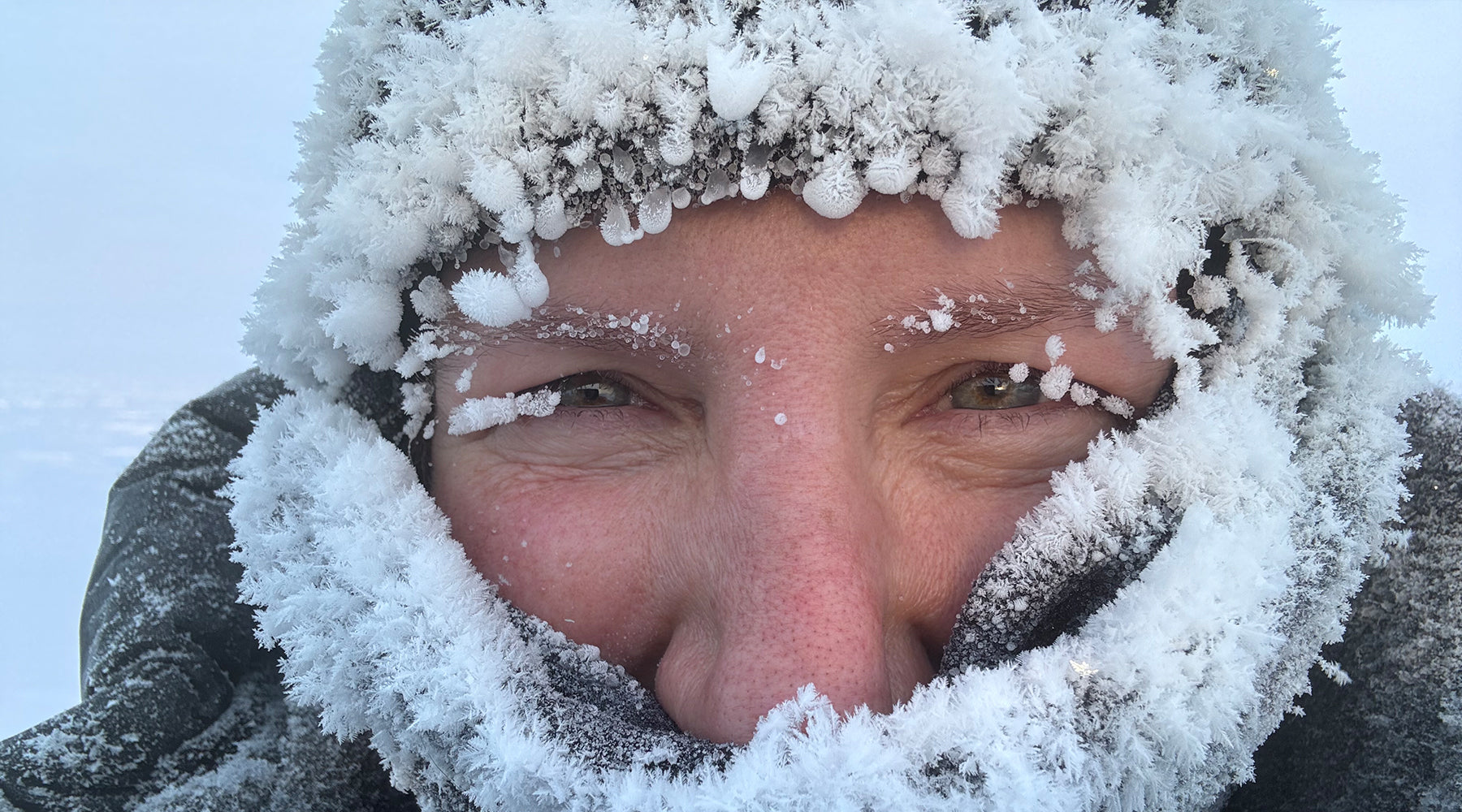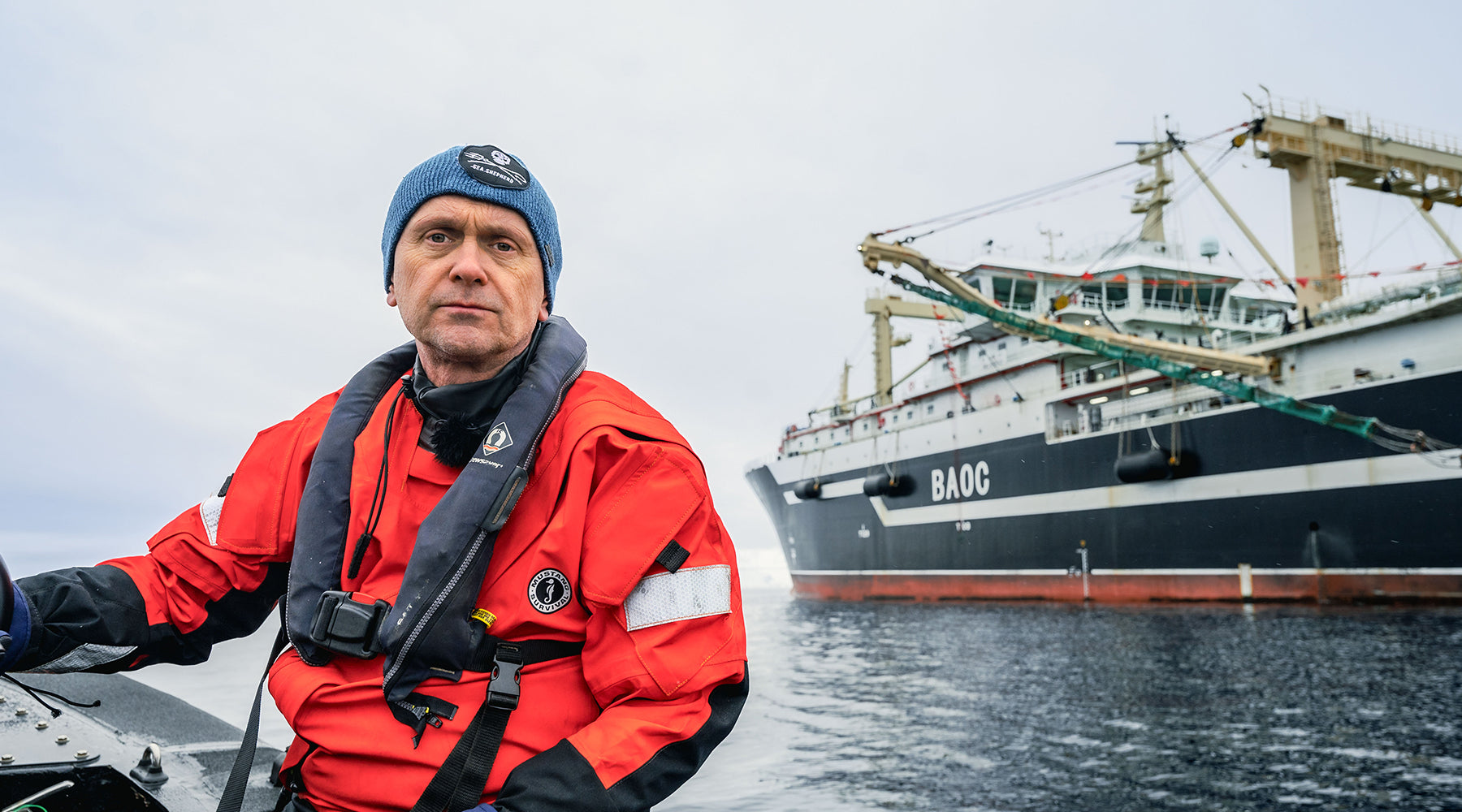
SHACKLETON MEDAL 2025: MEET THE SHORTLIST - PROFESSOR ANNA WÅHLIN
Polar Oceanographer
Wåhlin led the breakthrough mission deploying the RAN autonomous underwater vehicle beneath the Dotson Ice Shelf, producing the first detailed maps of its underside. Her findings offer game-changing insights into glacial melt and its drivers.
You headed up the breakthrough mission in which a robot sub (RAN) created unprecedented maps of the underside of a glacier, ushering in a new era of discovery. Can you tell us about the moment you realised how significant the mission would prove to be?
We first got the vehicle in 2016 and then there were technological delays. We worked for many many years to get it all functioning that the way we had envisioned. In 2022 there was additional work – we had new sensors and it took a lot of time to set up. Even on board our ship on the expedition, there was a point when we were quite worried. Still, we deployed it, it came out, and we had a look at the data. We remained worried – what were we seeing here? From above, it all looked flat. What did we need to do? We were so angry because this mission was taking up all the ship time and all the costs, all the huge investment. There was huge relief as we actually saw some interesting data came through. Then it got even better as it dawned on us how significant these patterns were. Antarctica is a continent with ice shelves surrounding it, and the biggest one is the size of France. But there are oceans down below there of which we have no idea. And these patterns show us that there are physical processes going on down there that we have not conceived of previously. New things going on that we did not know about one hour before. I think it’s a huge privilege to be a scientist and have that feeling.
You were the first female professor in glaciology in Sweden. How was your journey as a female academic in polar science and what particular challenges have you faced?
I think all women face difficulties in our field, but I haven't experienced it particularly severely. To be honest, I have tried to go with the flow. In my experience, being a woman has also brought some positive things, because when you are the first woman to do something you can define your own role. It’s been good for me that I don't have to follow in someone else’s footsteps, I don’t have to worry about a predefined way to do things. That said, I'm very glad to see that things are actually changing, in particular in Antarctic science. That shift is really monumental, going from a moment when women were not allowed in Antarctica to now when I think there are a lot of women doing Antarctic science.

What inspired you to be a scientist?
It’s curiosity that drives me. I think the reason I was interested in Antarctica is because it represents the most unknown part of the world. It's a whole continent that's basically a mystery for us. It represents big research questions and it’s a very special environment. I gathered my skills for investigating it along the way. It’s important to acknowledge that it's not a one person show in any way. There are many, many people who have been really crucial to make this happen, an international group that includes fantastic technicians who think outside of the box.
You are a leader, but to achieve what you have you also need to be thinking outside the box. Would you describe yourself as an intellectual rebel?
I think that’s correct. There’s a sense in which it has helped to be a boomer, because everything I do is unconventional.

What’s the greatest challenge you have overcome in your career?
I think the challenges have become bigger and bigger as time goes by. In the beginning of my career the obstacle would be a professor, an old male professor who created some kind of opposition to a project. But now the big obstacle is that we have lost a 5.5. million Euro vehicle. (The RAN disappeared on the final stage of the mission)

What are you doing with the data that you got from the RAN?
We are working to make the data public, and we are pleased to see that there are many research groups working with it around the world. Obviously we are working with it too. First, I was hoping that we would have like a unified theory of what creates the patterns but so far we don't. But we are working on understanding the physics of what could create those patterns.

Can you describe the moment you first reached Antarctica, and the impact it had on you?
We were approaching by ship. There’s always a lot of noise on icebreakers, and you punch through the ice, back and forth, back and forth, and then you see the iceberg and see marine mammals. And then you get out, and there are often formations called polynyas –open water next to the continent. So suddenly you leave the ice and it becomes quiet, and then you see this thing in the distance. And at first, you don't understand that you're actually seeing Antarctica. You think it's some strange clouds down there because it’s all white, and you don't see where the heaven ends and where the ice begins. And that was it for me. Suddenly, I saw this thing that you have seen on the maps and I realised that even if you start by the coast where you see the ice clearly, when you start to trace it, you get lost. Your eyes get lost along the way. And then you’re asking is that a cloud, or is the ice or what is it? And then you realise we are the only ones seeing this in the world. We are the only ship here, yeah, the next ship is miles and miles away. And you know exactly, using the GPS, you know, okay, it's on the other side of the continent.
By Rachel Halliburton


